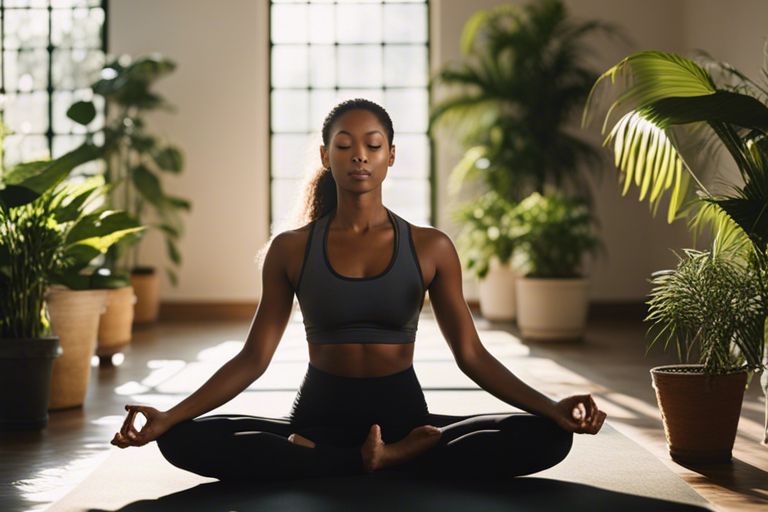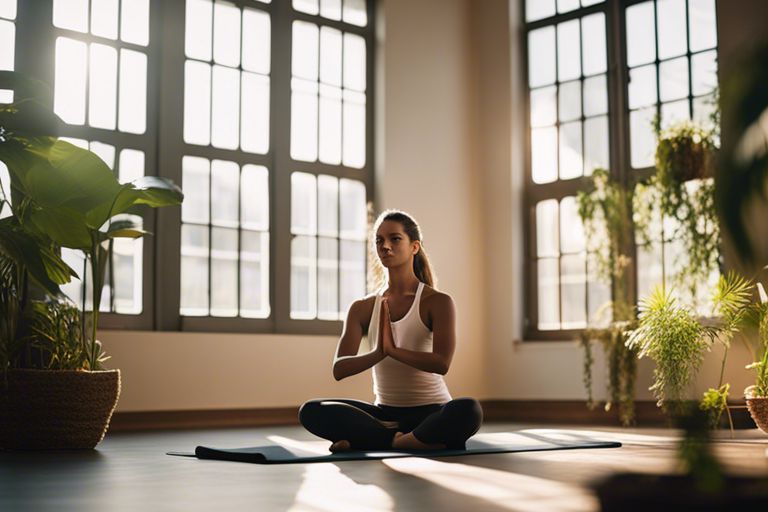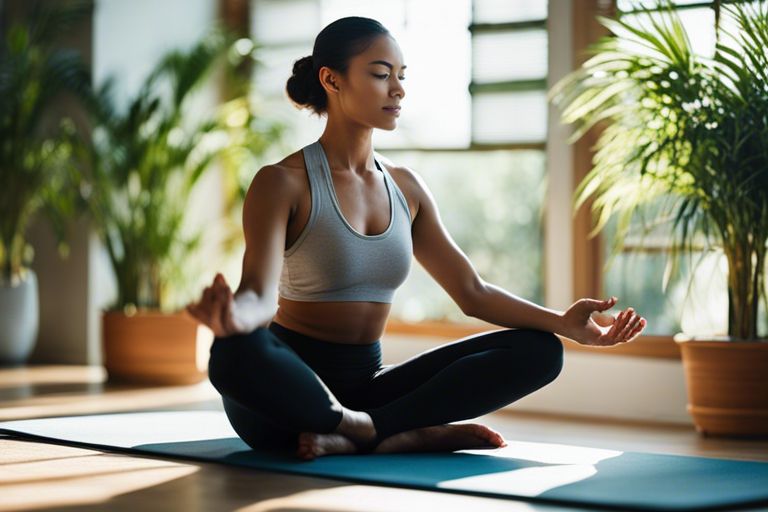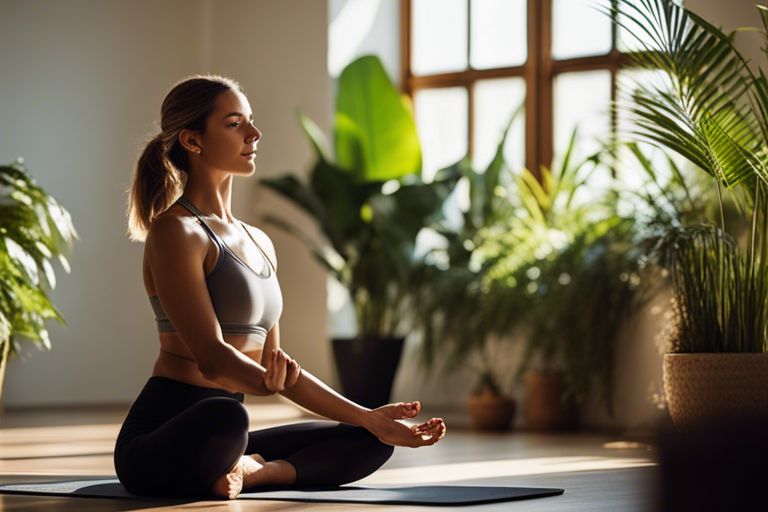Overwhelmed by the fast pace of daily life? Slow down and center yourself by incorporating mindful yoga into your routine. In this guide, discover how slow, mindful yoga can help you cultivate presence and peace in your day-to-day activities. Check out Slow Mindful Yoga: 6 Ways to Be More Present for inspiration on how to start your journey towards a calmer, more mindful life through yoga.

Key Takeaways:
- Start with intention: Begin each slow mindful yoga session with a clear intention or purpose to guide your practice.
- Focus on the breath: Throughout your practice, concentrate on your breath and use it as a tool to stay grounded and present in the moment.
- Be gentle with yourself: Embrace a non-judgmental and compassionate mindset towards yourself during your slow mindful yoga practice, allowing for acceptance and growth.
Understanding the Benefits of Slow Mindful Yoga
While incorporating slow mindful yoga into your daily routine may seem like just another task to add to your busy schedule, the benefits it offers are worth the time and effort. Not only does slow mindful yoga help improve your physical health, but it also has numerous mental and emotional benefits that can enhance your overall well-being.
How It Reduces Stress and Anxiety
To start, slow mindful yoga is a great way to reduce stress and anxiety in your life. By focusing on your breath and movement, you are able to bring your awareness to the present moment, helping to calm your mind and relax your body. This practice can help you release tension and let go of any negative thoughts or worries that may be causing you stress, allowing you to feel more balanced and at peace.
Improving Flexibility and Balance
Even if you’re not naturally flexible, slow mindful yoga can help you improve your flexibility and balance over time. By gently stretching and moving your body in various poses, you can increase your range of motion and build strength in your muscles. This can not only help prevent injuries, but it can also improve your posture and coordination, making everyday tasks easier and more comfortable.
A regular practice of slow mindful yoga can also help you become more aware of your body and how it moves, which can be beneficial in preventing falls and accidents, especially as you age. By improving your balance through yoga, you can feel more stable and confident in your movements, reducing your risk of injury.
1. Choose a calm space with minimal distractions.
2. Begin with deep breathing and focus on inhales/exhales.
3. Move mindfully, paying attention to each movement and sensation.
4. Hold poses for longer periods to deepen the stretch.
5. Practice gratitude and mindfulness throughout the session.
6. End with a few minutes of relaxation in Corpse pose.

Preparing for Your Daily Practice
The first step in incorporating slow mindful yoga into your daily routine is to ensure you have a peaceful space where you can practice without distractions. This space can be a corner of your living room, a spare room, or even outdoors. The key is to find a place where you feel calm and focused.
Tips for Creating a Peaceful Space
- Choose a quiet area free from distractions
- Use soft lighting or candles to create a calming atmosphere
- Decorate your space with plants or soothing colors
- Play soft music or nature sounds to enhance the ambience
Any clutter in the space can be distracting, so make sure to keep it tidy and organized. Peaceful surroundings can help you get into the right mindset for your practice and deepen your connection to yourself.
Investing in Essential Props and Equipment
Tips for setting up your space to support your slow mindful yoga practice: it is necessary to have the right props and equipment to enhance your practice and provide support when needed. Items such as a yoga mat, blocks, straps, and a bolster can help you achieve proper alignment and make your practice more comfortable.
Building a Sustainable Routine
All factors must be taken into account when building a sustainable routine for your mindful yoga practice. It is important to consider when is the best time of day for you to practice, how long you can realistically commit to each session, and what other obligations may impact your ability to maintain a consistent practice.
Factors to Consider When Scheduling Your Practice
- Time of day: Choose a time when you are most likely to be free from distractions and have the energy to fully engage in your practice.
- Session length: Be realistic about how much time you can dedicate each day. It’s better to start with shorter sessions and gradually increase the length as you build consistency.
- Other commitments: Take into account any other obligations you have throughout the day, such as work or family responsibilities, to ensure your practice fits seamlessly into your routine.
Any adjustments to your schedule should be made thoughtfully and with the intention of creating a sustainable practice that you can maintain in the long term.
How to Start Small and Be Consistent
Scheduling consistent practice times can help you establish a routine and make your mindful yoga practice a regular part of your day. Start with just a few minutes each morning or evening, and gradually increase the duration as you become more comfortable with your practice. Consistency is key, so aim to practice at the same time each day to help solidify your routine.
One way to help you stick to your routine is to create a dedicated space for your yoga practice in your home. Having a designated area where you can leave your mat rolled out and ready to go can make it easier to jump into your practice without any barriers. Find a quiet and calm space where you can focus and feel grounded during your practice.
It is important to ease into your practice and not push yourself too hard in the beginning. By starting small and being consistent, you will gradually build up your strength, flexibility, and mindfulness skills over time. Be mindful of, progress is a journey, and every small step you take towards consistency is a win.

Overcoming Common Obstacles
Despite your best intentions, incorporating slow, mindful yoga into your daily routine can sometimes be challenging. You may find yourself struggling to carve out the time or stay consistent with your practice. If you’re facing obstacles, remember that establishing a mindful morning routine can set a positive tone for the day. You can check out How to Create a Mindful Morning Routine for helpful tips on starting your day with intention and focus.
Tips for Staying Motivated and Focused
- Set clear goals for your yoga practice.
- Find a support system to help keep you accountable.
- Track your progress and celebrate small victories along the way.
After implementing these strategies, you’ll find it easier to stay motivated and focused on your slow, mindful yoga practice.
Dealing with Injuries and Setbacks
Obstacles such as injuries or setbacks can derail your yoga routine, but they don’t have to be the end of your practice. Remember that your well-being is the top priority, so listen to your body and make modifications as needed. If you’re dealing with an injury, consult a healthcare professional for guidance on how to safely continue your practice. Plus, incorporating gentle movements and focusing on restorative poses can help you maintain a connection to your practice while allowing your body to heal.
Final Words
Presently, you have learned the benefits of incorporating slow, mindful yoga into your daily routine. By practicing this gentle form of yoga, you can improve your flexibility, reduce stress, and cultivate a deeper mind-body connection. Remember to take your time, focus on your breath, and listen to your body’s needs as you move through each pose.
Making slow mindful yoga a part of your daily routine doesn’t have to be overwhelming. Start with just a few poses each day and gradually increase the duration as you become more comfortable. Find a quiet space, set aside some time for yourself, and enjoy the calming and centering effects that this practice can bring to your day. With consistency and patience, you’ll soon discover the transformative power of slow mindful yoga in your life.
FAQ
Q: What is slow mindful yoga?
A: Slow mindful yoga is a practice that involves slow, deliberate movements coordinated with deep breathing to help you become more present and focused in the moment.
Q: How can I incorporate slow mindful yoga into my daily routine?
A: You can incorporate slow mindful yoga into your daily routine by setting aside a specific time each day for your practice, creating a peaceful and quiet space to practice, and committing to being fully present during your practice.
What are the benefits of incorporating slow mindful yoga into my daily routine?
A: Incorporating slow mindful yoga into your daily routine can help reduce stress and anxiety, improve flexibility and strength, increase mindfulness and self-awareness, and promote overall well-being and relaxation.











